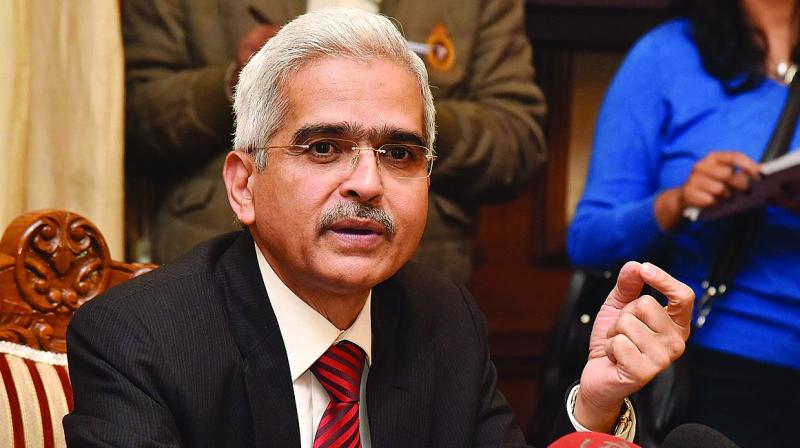Bank can lend more to Non Banking Finance Companies
The RBI decided to raise a bank’s exposure to a single NBFC to 20 per cent of Tier-I capital.

Mumbai: To enhance credit flow to the crisis hit Non Banking Finance Companies (NBFC) sector, the Reserve Bank of India (RBI) on Wednesday announced a slew of measures.
The RBI decided to raise a bank’s exposure to a single NBFC to 20 per cent of Tier-I capital. It also allowed banks to classify as priority lending the credit given to registered NBFCs (other than Micro Finance companies) for on-lending to Agriculture up to Rs 10 lakh, Micro and small enterprises up to Rs 20 lakh; and Housing up to Rs 20 lakh per borrower, up from Rs 10 lakh at present.
On the same lines, in order to boost consumption, the central bank also reduced the risk weights for consumer loans such as personal loans, auto loans to 100 per cent from 125 per cent.
As per the prevailing norms, a bank’s exposure to a single NBFC was restricted to 15 per cent of its Tier I capital, while for entities in the other sectors the exposure limit is 20 per cent of the Tier I capital, which can be extended to 25 per cent by banks’ boards.
According to Icra Ltd, the total Tier 1 capital of the banking system is estimated at Rs 10 lakh crore. A five per cent increase in single counterparty exposure will allow banks to undertake additional exposure of Rs 50,000 crore and hence an overall exposure of Rs 2 lakh crore to a single NBFC.
“As per our estimates, none of the NBFCs will potentially have such a huge exposure to banking system.
However, it may enable some of the individual Banks, who may be breaching single NBFC exposure limit to extend fresh funding,” said Karthik Srinivasan Vice President and Sector Head, Financial Sector Ratings at Icra.
In another move, the RBI increased the on-lending limit of housing loans from existing Rs 10 lakh to Rs 20 lakh for priority sector eligibility.
“With a view to further increasing the credit flow to certain priority sectors which contribute significantly to the economic growth in terms of export and employment, and recognizing the role played by NBFCs in providing credit to these sectors, it has been decided to allow, subject to certain conditions, bank lending to registered NBFCs (other than MFIs) for on-lending to Agriculture (investment credit) up to Rs 10 lakh; Micro and Small Enterprises up to Rs 20 lakh and housing up to Rs 20 lakh per borrower (up from Rs 10 lakh at present) to be classified as priority sector lending,” said the RBI. Detailed guidelines on these measures will be issued by the month-end.
The priority sector lending tag for bank lending to NBFCs, which on-lend to agriculture, housing and MSMEs, is positive for the incremental credit flow to these sectors. This will additionally improve the available sources of funding, especially for the new-age mid and small-sized NBFCs at a relatively lower cost, while improving the banks’ ability to meet their priority sector lending targets said Srinivasan.
In order to boost consumption, the central bank also reduced the risk weights for consumer loans such as personal loans, auto loans to 100 per cent from 125 per cent allowing banks to reduce their loan rates on these loans. Banks have to keep aside a higher amount of money depending on the risk perception on loans guided by the central bank.
With personal loans of Rs 6 lakh crore outstanding as on June 2019, a 25 bps reduction in risk weight may also reduce the capital requirements of banks by Rs 12,500 crore and add 14 bps to their capital ratios. The growth in personal loans remains high with 19 per cent YoY growth during FY2019.
Further, the share of personal loans in overall retail loans of bank has increased to 27 per cent in July 2019 of retail loans as compared to 19 per cent as on March 2009.
Deo Shankar Tripathi, MD & CEO, Aadhar Housing Finance Ltd, said, “Increasing single party exposure from existing 15 per cent to 20 per cent of tier 1 capital of bank for lending to registered NBFC is a big support.”
